<< Previous | Displaying results 6641-6650 of 6768 for "" | Next >>
A member of the German Order Police Battalion 101 stands next to a sign marking the entrance to the Lodz ghetto in German-occupied Poland, 1940–1941. The German text of the sign reads: "Announcement: In accordance with a police order of February 8, 1940, all Germans and Poles are forbidden entry into the ghetto area."
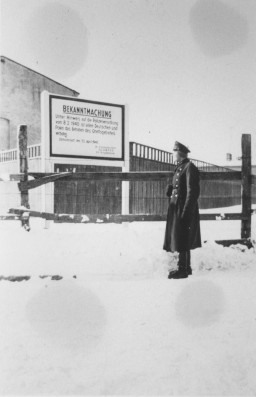
Nazi eugenics poster entitled "Feeble-mindedness in related families in four neighboring towns." This poster shows how "feeble-mindedness" and alcoholism are passed down from one couple to their four children and their families. The poster was part of a series entitled, "Erblehre und Rassenkunde" (Theory of Inheritance and Racial Hygiene), published by the Verlag für nationale Literatur (Publisher for National Literature), Stuttgart, Germany, ca. 1935.
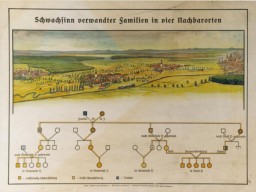
Propaganda slide produced by the Reich Propaganda Office showing the opportunity cost of feeding a person with a hereditary disease. The illustration shows that an entire family of healthy Germans can live for one day on the same 5.50 Reichsmarks it costs to support one ill person for the same amount of time. Dated 1936. Nazis defined individuals with mental, physical, or social disabilities as “hereditarily ill” and claimed such individuals placed both a genetic and financial burden upon society…
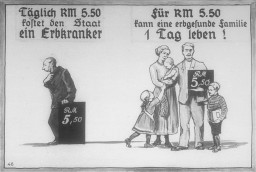
In July 1995, Bosnian Serb forces killed as many as 8,000 Bosniaks from Srebrenica. It was the largest massacre in Europe since the Holocaust. This photograph shows a Bosniak woman at a makeshift camp for people displaced from Srebrenica in July 1995.
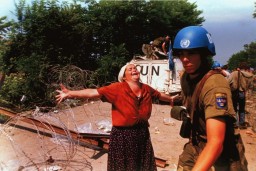
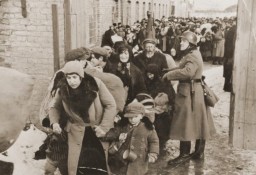
Nyanza is a site near Kigali, Rwanda, where several thousand people were executed after being marched from the Belgian Technical School in April 1994. At the school, they had been under the protection of UN peacekeepers until the soldiers were recalled to the airport to help evacuate expatriates. This is one of the few sites where victims had the honor of individual burial; most often they were buried together in large graves. Photograph taken on November 24, 2007. United States Holocaust Memorial Museum

Refugee women and children arrive by truck in Tuzla during the Bosnian War, which lasted from 1992 to 1995. They are likely coming from Srebrenica. Photo taken in March 1993.
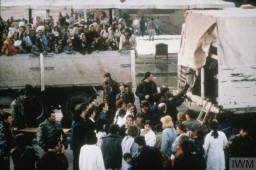
Dated June 6, 1944, this US Twelfth Army Group situation map shows the presumed locations of Allied and Axis forces on D-Day, when Allied troops landed on the beaches of Normandy. Drafted during the war, the content in this historical map reflects the information that operational commander, General Omar N. Bradley, would have had on hand at the time.

Canadian troops of the 'B' Company, North Shore (New Brunswick) Regiment take cover on June 6, 1944, or D-Day.
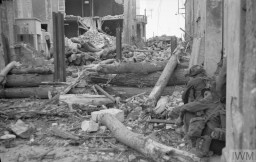
Captain Lasdun briefs troops of the British Army on June 4, 1944, two days before the Allied invasion of Normandy on D-Day.
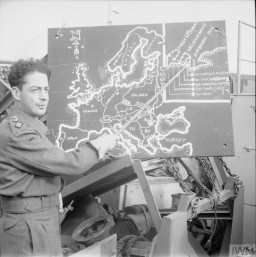
We would like to thank Crown Family Philanthropies, Abe and Ida Cooper Foundation, the Claims Conference, EVZ, and BMF for supporting the ongoing work to create content and resources for the Holocaust Encyclopedia. View the list of donor acknowledgement.